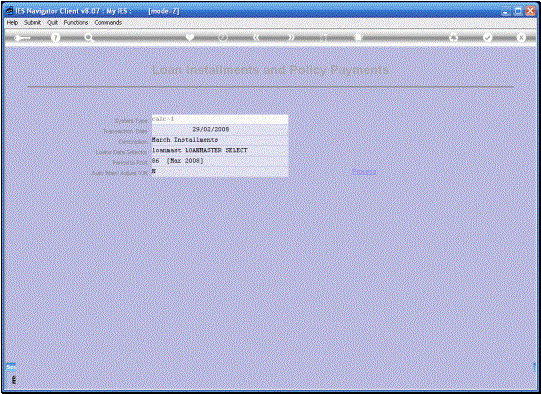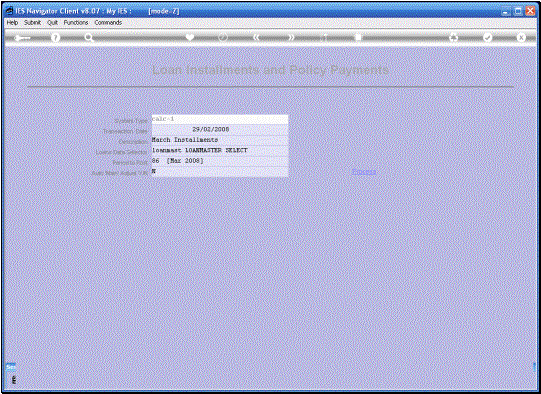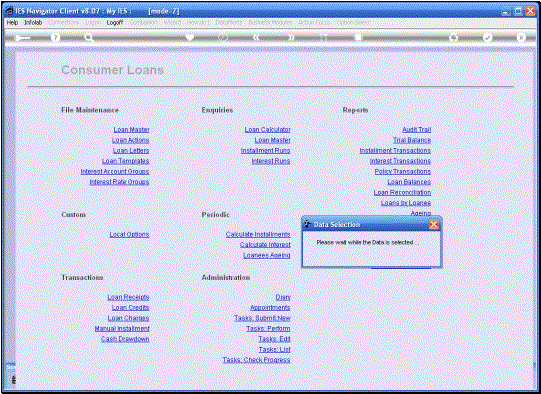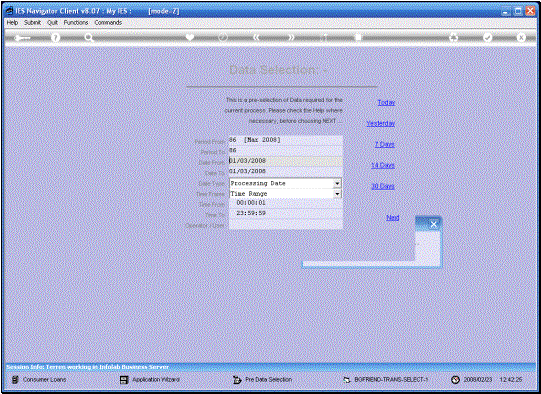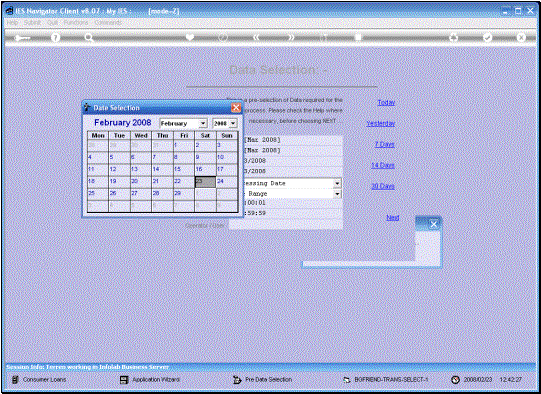In this session we are
looking at the performing of Loan Installments. In the example that we
see here, we can see that on this particular Loan, the Installment is $1,000. So, when we perform
Installments, then for all the Loans that we select, (in the perform step)
the System is going to check which of these loans are Active and where an
Installment is still due, the System will perform the Loan Installment
transaction. |
|
|
Because these are Smart
Loans and it is possible to have different Interest Rates connected, to the
Capital en the Current Portions of the Loan, therefore the transaction Date
is, or may be fairly important in terms of the Installment, because the
Installment transaction is going to reduce the Capital Balance and increase
the Current Balance. If the Interest rate on
these 2 portions of the Loan is exactly the same, then the Transaction Date
is not all that relevant. . In this particular case,
we are going to choose a Transaction date for the End of the Month. |
|
|
|
The “Description” that
we use here, is not the Installment Transaction Description. Rather it is the Perform
Action Description, so that when we look up the various instances of
Performing Loan Installments, then we can recognize this particular run. |
|
|
|
|
|
The Data Selector that
we apply is quite important because this determines whether we are selecting
from ALL the Loans or only certain of the Loans. In other words, the Data
Selector that we apply is going to determine what choices we can make in
terms of which Loans will be selected for Processing. |
|
The Period that we post
to is of course quite relevant as well. Now in my example I am
using a Transaction Date of 29 February, but I record it as a March
Installment, because I am posting to the Period, March 2008, which effectively
means that this Installment is due on the 1st of the Month. I
could also use a Transaction Date of the 1st of March and that
would still be the same. I could also say that
the Installment is actually due at the end of the month and in that case, possibly
I would have used the Period 85, which would be February 2008. Now there is also the
“Auto Main Adjust” where we can choose Yes or No. |
This
Option is an advanced Option. It means that when we say “Yes” here, then if a
Capital portion of a Loan should go into Credit, because of the Loan
Installment Transaction, then the System will reset that to Zero, by
transferring the appropriate amount back from the current or Arrears portion
into the Capital portion. |
|
So
this is now where the Data Selector comes into play and I have the
opportunity to select only particular Loans of the specific Selection Flag or
Loan Type etc, but I am leaving the Wild Cards as is, i.e. I will be
selecting the entire Loans portfolio. |
|
|
We
can of course Query any Installment Run to see when it was performed and by
whom. |
|
|
|
|
|
|
|
If
we should want to, we can also run the Installment transactions Report to see
what Installment Transactions the System has generated. |
|
|
|
In this case I know that
the Transactions I am interested in, were posted into Period 86, which is
March 2008. |
|
|
|
|
|
Because I have performed
the run on the 29th of February as the Transaction Date, I am
changing for inclusion of that date. I also change the Date type, from the
Processing Date to the Transaction Date to ensure that the Transactions can
be correctly selected. |
|
|
|
My Report includes a
number of Installment Transactions that have been generated. |
















